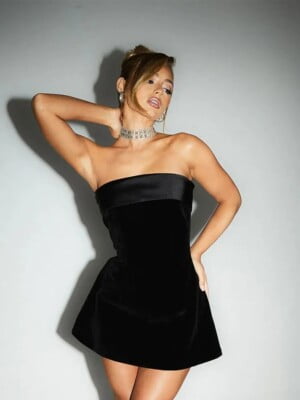Taking accurate measurements for clothes can seem tricky, but it’s a valuable skill that can save you time and frustration when shopping. I’ve learned that getting the right fit starts with knowing your body measurements. To measure yourself for clothing, you’ll need a flexible measuring tape and a few key body landmarks like your chest, waist, and hips.

Proper technique is crucial for getting accurate numbers. I always make sure to keep the tape snug but not tight, and to measure in a relaxed state. It’s also helpful to wear fitted clothing or just underwear to get the most precise measurements.
With practice, taking your own measurements becomes quick and easy. And once you have your numbers, you’ll be able to shop for clothes with confidence, whether in stores or online. You’ll find it much easier to choose sizes that fit well and flatter your body shape.
Key Takeaways
- A flexible measuring tape and knowledge of key body points are essential for accurate clothing measurements
- Proper measuring technique involves keeping the tape snug but not tight while in a relaxed state
- Having your measurements on hand makes shopping easier and helps ensure better-fitting clothes
Understanding Body Measurements

Taking accurate body measurements is crucial for finding clothes that fit well. I’ll explain the key areas to measure and how to do it properly. Knowing your body shape also helps in choosing flattering styles.
Key Measurements for Clothing
To get clothes that fit right, I focus on four main measurements: bust, waist, hips, and chest. For the bust measurement, I wrap the tape around the fullest part of my chest. The waist is measured at the narrowest part of my torso.
For hips, I measure the widest part, usually 7-9 inches below my waist. Men’s chest measurement goes across the broadest part. I always use a flexible, non-stretchy tape measure for accuracy.
I make sure to:
- Stand straight with feet together
- Breathe normally
- Keep the tape snug but not tight
Finding Your Natural Waist
My natural waist isn’t always where my pants sit. To find it, I look for the narrowest part of my torso, usually above my belly button. If I bend to the side, the crease that forms is my natural waist.
I place the tape measure around this area, keeping it parallel to the floor. It’s important not to suck in my stomach or pull the tape too tight. The measurement should be snug but allow for comfort and breathing.
Identifying Your Body Shape
Knowing my body shape helps me choose clothes that flatter my figure. I compare my bust, waist, and hip measurements to determine my shape. Common shapes include:
- Hourglass: Bust and hips similar, with a defined waist
- Pear: Hips wider than bust, with a smaller waist
- Apple: Waist larger than bust and hips
- Rectangle: Bust, waist, and hips similar in size
I consider my shoulder width and leg length too. These factors affect how clothes drape on my body. By understanding my shape, I can pick styles that enhance my best features and create balance.
Preparing to Take Measurements

Taking accurate measurements is crucial for finding clothes that fit well. The right tools, clothing, and posture make a big difference. Let’s look at how to get ready for measuring.
Choosing the Proper Tape Measure
I always use a flexible measuring tape for taking body measurements. It’s thin, pliable, and can wrap around curves easily. A cloth or fiberglass tape measure works best. I avoid metal tape measures as they’re too stiff.
I make sure my tape measure is in good condition. No frayed edges or stretched-out sections. These can lead to inaccurate readings.
I double-check that the tape measure shows both inches and centimeters. This helps me convert measurements if needed.
Dressing Appropriately for Accurate Measurements
I wear thin, form-fitting clothes when measuring. A lightweight t-shirt and leggings work well. Bulky clothing can throw off measurements.
I put on the undergarments I’ll wear with the outfit I’m measuring for. Different bras can change bust measurements. Shapewear affects waist and hip measurements.
I remove items from my pockets and take off any bulky jewelry. These can add extra inches where I don’t want them.
The Importance of Posture
I stand up straight with my feet together when measuring. Good posture ensures consistent measurements every time.
I relax my muscles and breathe normally. Sucking in my stomach or flexing muscles can skew results.
I keep my arms relaxed at my sides for most measurements. When measuring my bust, I lift my arms slightly to get the tape under them.
I look straight ahead, keeping my chin parallel to the ground. This helps me get an accurate neck measurement if needed.
Step-by-Step Measurement Techniques
Taking accurate measurements is key for well-fitting clothes. I’ll guide you through measuring your upper and lower body, plus how to record the numbers properly.
Measuring Upper Body
To measure your bust, I recommend wrapping the tape around your back and over the fullest part of your chest. Make sure the tape is straight and snug, but not tight.
For shoulder measurements, I suggest going across your back from one shoulder tip to the other. This helps with shirt and jacket fit.
To get your sleeve length, I start at the shoulder seam and measure down to your wrist bone. For a full arm length, I measure from the center back of your neck, over the shoulder, and down to the wrist.
Measuring Lower Body
For waist measurements, I wrap the tape around the narrowest part of your torso, usually just above the belly button. I make sure it’s snug but allows for breathing.
Hip measurements are taken at the fullest part, about 7-9 inches below your waist. I keep the tape level all the way around for accuracy.
For inseam, I measure from the crotch seam down to where you want pants to end, usually at the ankle bone. This is easier with help, but you can do it yourself using well-fitting pants as a guide.
Recording Measurements Correctly
I always round measurements to the nearest 1/4 inch or 0.5 cm for precision. It’s best to write them down immediately to avoid forgetting.
I recommend creating a simple table or list with each body part and its measurement. Here’s an example:
- Bust: 36 inches
- Waist: 28 inches
- Hips: 38 inches
I suggest taking measurements in your underwear for the most accurate results. It’s also helpful to retake them every few months, as body shape can change over time.
Applying Measurements to Clothing Choices
Knowing your measurements is key to finding clothes that fit well. I’ll explain how to use size charts, pick the right fit for dresses and shirts, and adjust sewing patterns.
Understanding Size Charts
Size charts are helpful tools for finding clothes that fit. I check these charts before buying to avoid returns. Most charts list body measurements like bust, waist, and hips. I match my numbers to the sizes on the chart.
Different brands may have their own charts. I don’t assume I’m the same size in every store. For online shopping, I always look up the size guide first.
Some charts include garment measurements too. These tell me how big the actual clothing item is. This helps me figure out if I want a looser or tighter fit.
Selecting the Right Fit for Dresses and T-Shirts
For dresses, I focus on bust, waist, and hip measurements. If my shape doesn’t match the standard proportions, I pick the size that fits my largest measurement. I can always take in other areas if needed.
With t-shirts, chest and shoulder width are key. I make sure there’s enough room to move my arms freely. Neck measurements matter for crew necks and collared shirts.
I also think about the style I want. Fitted clothes need more precise measurements. Looser styles are more forgiving.
Customizing Sewing Patterns
Sewing patterns use different sizing than ready-made clothes. I always check the pattern size chart before cutting fabric.
I compare my measurements to the pattern’s finished garment measurements. This tells me how the item will fit when done. If I’m between sizes, I go up and adjust later.
For a perfect fit, I make a test garment first. This lets me see how the pattern fits my body. I can then change the pattern before cutting my good fabric.
Some common adjustments I make:
- Lengthening or shortening
- Adjusting the bust
- Changing the waist or hip curve
By tweaking patterns, I create clothes that fit just right.
Advanced Tips for Tailoring and Shopping
Getting the right fit when tailoring or shopping for clothes takes skill. I’ll share some expert tips to help you nail your measurements and find perfectly fitting garments.
Adjusting Measurements for Tailored Items
When measuring for tailored clothes, I always add a bit of ease. For pants, I add 1/2 inch to the waist and 1 inch to the hips. This gives room to move and sit comfortably.
For shirts, I add 1-2 inches to the chest and waist. The amount depends on how fitted you want it. Looser fits need more ease.
I also take the back waist length measurement. This is key for jackets and dresses to fit well. Measure from the base of your neck to your natural waistline.
For low-rise pants, I measure 3-4 inches below the natural waist. This ensures the right fit at the hips.
Making Informed Choices When Shopping Online
Shopping online can be tricky. I always check the size chart for each brand. They often differ.
I keep my current measurements handy. This lets me compare to size charts quickly.
For pants, I look at both waist and inseam. Some brands offer different lengths.
When buying bras online, I consider both band and cup size. Sister sizes can work if my exact size isn’t available.
I read reviews from people with similar body types. They often give great fit insights.
Measuring for Specialized Clothing
For swimwear, I measure my torso length. This is from the top of my shoulder to the crotch.
When buying compression wear, I measure my calves and thighs. Tightness matters for these items.
For formal wear, I take extra care with bust measurements. I measure at the fullest part and note if I’ll wear a specific bra.
I use a flexible tailor’s tape for all these measurements. It curves with my body shape for accuracy.
Frequently Asked Questions
Taking accurate measurements is key for well-fitting clothes. I’ll address common questions about measuring different body parts and techniques to get the right fit.
What is the correct way to measure my chest for clothing purposes?
To measure your chest, wrap the tape around the fullest part. For women, this is usually across the nipples. For men, it’s the broadest part of the chest. Lift your arms and place the tape under your armpits. Keep it level and snug, but not tight.
How can I accurately record my waist size for tailored garments?
I find the natural waist is usually the smallest part of the torso. It’s often about an inch above your belly button. Wrap the tape around this area. Make sure it’s snug but allows you to breathe comfortably. Don’t pull it too tight or let it sag.
Is there a standard method to measure inseam for pants sizing?
For the inseam, I measure from the crotch seam to the bottom of the ankle. It’s best to wear fitted pants and shoes similar to what you’ll wear with the new pants. Stand straight with your feet slightly apart. Measure along the inside of your leg.
Can you guide me on how to measure sleeve length for a perfect shirt fit?
To measure sleeve length, I start at the center back of the neck. I run the tape over the shoulder and down the arm to the wrist bone. It helps to bend your elbow slightly. This gives the right amount of ease for movement in the finished garment.
How do I ensure accurate hip measurements when shopping for clothes?
For hip measurements, I find the fullest part of the hips. This is usually 7-9 inches below the waist. I wrap the tape measure around this area. It’s important to stand with feet together to get an accurate measurement.
What techniques can I use to measure dress sizes without a measuring tape?
Without a tape measure, I use a string or cord. I wrap it around the body part I need to measure. Then I mark where the ends meet. I can then measure this length against a ruler or yardstick. A belt or piece of ribbon can work too.




